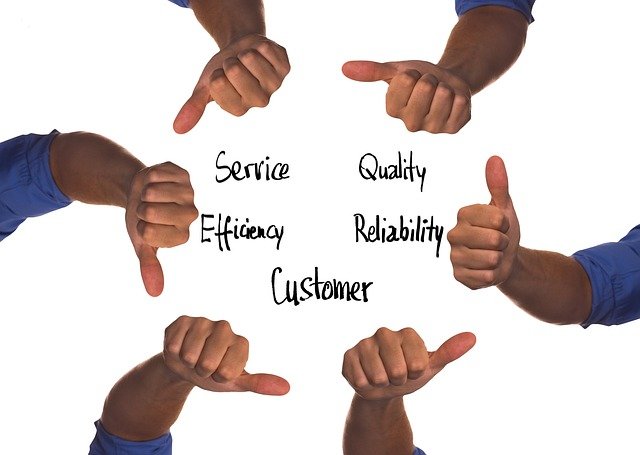Automating repetitive tasks to increase team productivity
Automating routine activities can free teams to focus on higher-value work. This article explains how task automation across sales pipelines, customer onboarding, and reporting reduces manual effort, improves consistency, and supports measurable productivity gains while maintaining security and flexibility.

Automating repetitive tasks streamlines daily operations and reduces the time teams spend on manual work, such as data entry, follow-ups, and report generation. When repetitive steps are automated, staff can focus on more strategic activities like relationship building, problem solving, and planning. Effective automation also brings more consistent outcomes, lowers human error, and helps teams scale processes across new customers and markets while keeping a clear audit trail.
How can automation improve sales and pipeline management?
Automation in the sales pipeline moves leads through stages with fewer manual handoffs, using triggers, reminders, and templated communications. By automating lead scoring and follow-up sequences, sales teams spend less time on administrative tasks and more time engaging qualified prospects. Automated pipeline rules can update deal status, assign owners, and set reminders when opportunities stall, which improves visibility across the pipeline and shortens response times to inquiries from potential customers.
Many automation tools also provide standardized workflows that enforce best practices across the sales cycle, ensuring consistent handling of leads and reducing the risk of lost opportunities. This improves forecasting accuracy because pipeline stages reflect events recorded by workflows instead of relying on manual updates.
How does automation help customer onboarding and retention?
Automating onboarding sequences ensures every new customer receives the same essential steps—welcome messages, product setup instructions, and scheduled check-ins—without requiring constant manual coordination. Consistent onboarding builds clearer expectations and faster time-to-value for customers, which can correlate with better retention over time when paired with timely follow-ups and educational content.
Retention-focused automation can trigger renewal reminders, satisfaction surveys, or targeted offers based on usage patterns and customer segmentation. When these processes are automated and tracked, teams can identify churn signals earlier and prioritize proactive outreach to at-risk customers.
How do workflows, segmentation, and customization reduce repetitive work?
Workflows automate multi-step processes that previously required manual intervention, such as approval chains, contract renewal checks, and cross-team notifications. Segmentation lets teams target specific groups of customers or leads with tailored sequences, reducing the effort needed to craft individualized messages while improving relevance.
Customization ensures those workflows adapt to unique business rules—conditional branches, variable fields, and personalized templates—so automated actions still feel appropriate for each recipient rather than generic. This balance lowers repetitive manual edits and supports greater personalization at scale.
What role do integration, cloud, and analytics play?
Integrations connect automation tools with other systems—email, calendars, support platforms, and billing—so data flows automatically rather than being copied between tools. Cloud-based automation offers accessibility and easier updates, enabling teams in different locations to rely on the same workflows and centralized data.
Analytics built on that integrated data reveals which automated steps deliver value and which create bottlenecks. Reports and dashboards can track conversion rates, time saved, and workflow performance, guiding continuous improvement and better resource allocation.
How do reports, security, and scalability support automated processes?
Automated reports compile activity logs, pipeline metrics, and customer interactions without manual aggregation, helping managers monitor team productivity and compliance. Security controls—role-based access, audit trails, and encrypted storage—ensure that automation does not open undue exposure to sensitive customer or sales data.
Scalability is a key benefit: well-designed automation can handle increasing volumes of leads and customers without proportional increases in headcount. As processes scale, maintaining secure configurations and regular reviews of automated rules prevents drift and keeps performance consistent.
How to balance automation with human touch for long-term results?
Automation should reduce repetitive tasks while preserving the moments where human judgment matters. Map processes to identify tasks that benefit most from automation—data syncing, reminders, templated outreach—while keeping relationship-driven interactions in human hands. Use analytics and customer feedback to adjust workflows, ensuring automation supports personalization and responsiveness.
Regularly review automated sequences to remove unnecessary steps and update messaging to reflect evolving customer needs. Training teams on how automated systems work helps people collaborate with automation effectively, ensuring that increased productivity translates into better customer outcomes and sustainable operational improvements.
Conclusion Automation can significantly reduce manual workload across sales, onboarding, reporting, and customer retention efforts when combined with secure integrations, cloud accessibility, and analytics-driven oversight. Thoughtful workflows, appropriate segmentation, and customization enable teams to scale consistently while retaining the human interactions that matter most to customers and long-term success.






